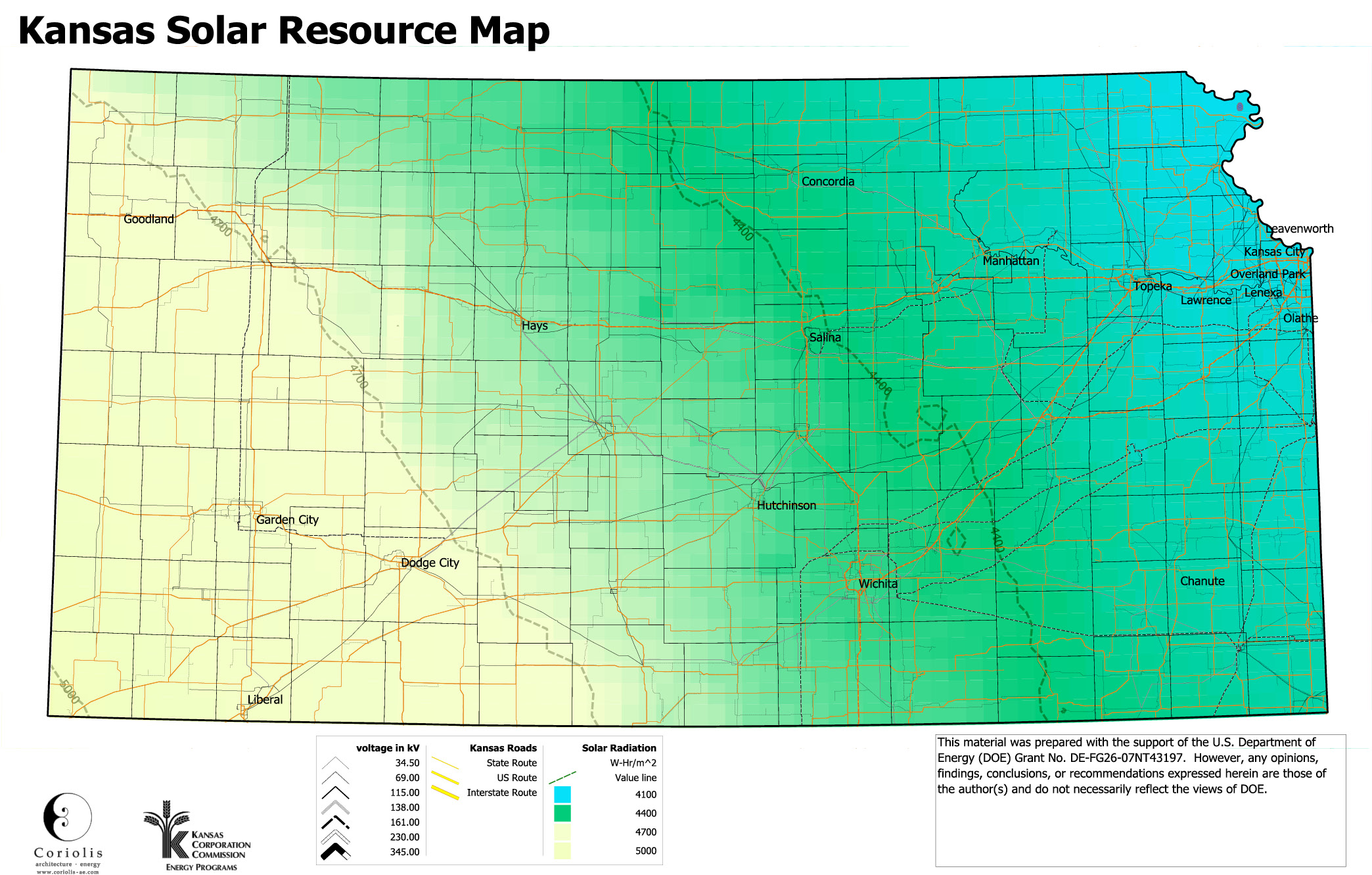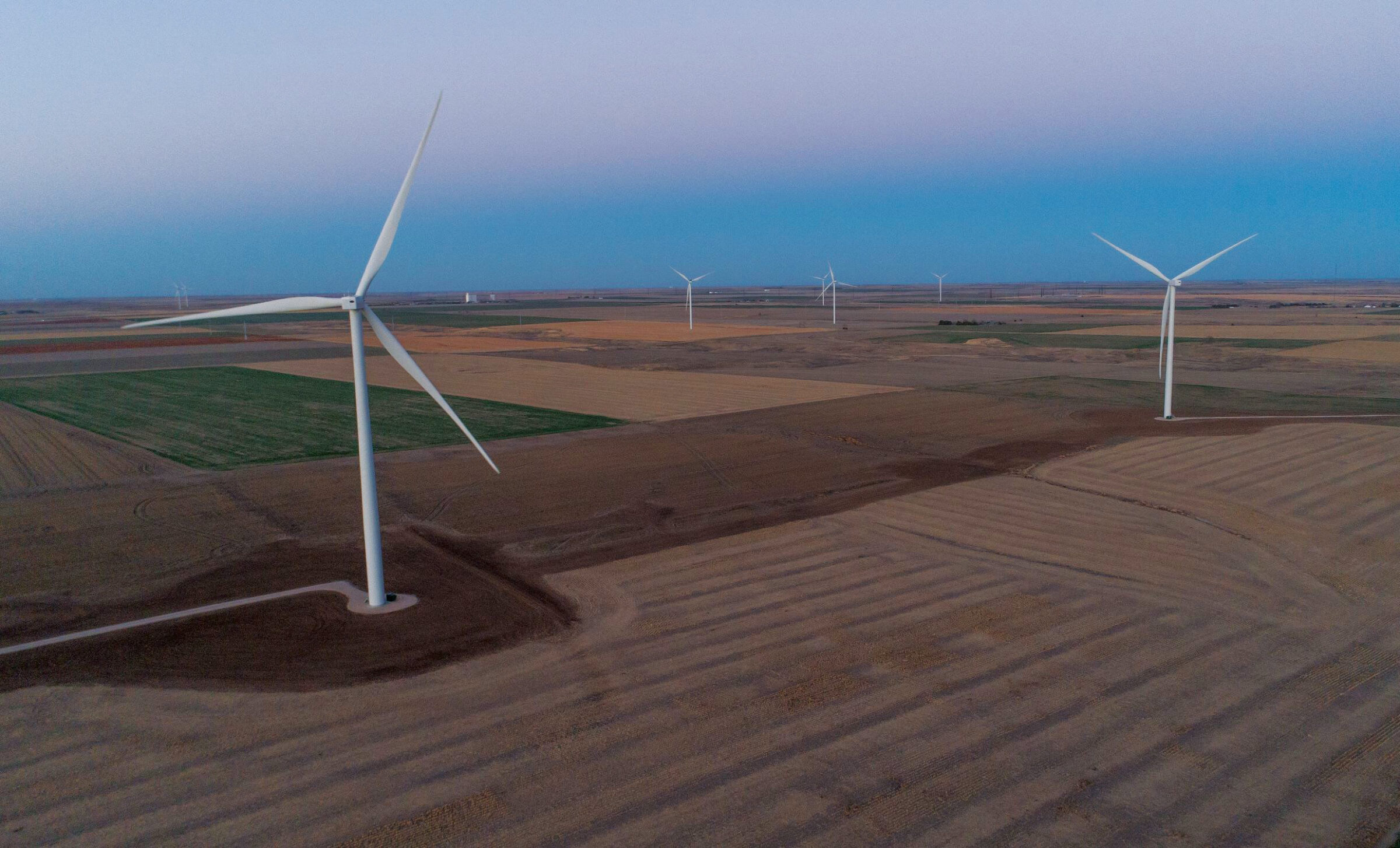Alive-action model of the clean energy economy’s circularity can be found in Kansas, where common-sense, middle-of-the-road policy and costs complement the state’s middle-of-the-country location and sensibility. They also complement the goals of a $4 billion megaproject.
Kansas is around the middle of the pack nationally when it comes to industrial power costs, according to the U.S. Energy Information Administration (EIA). Industrial customers paid an average rate of 8.3 cents per kilowatt-hour in 2022, making the state the 30th lowest by cost. A settlement agreement in the rate case submitted by major utility Evergy and approved by the Kansas Corporation Commission (KCC) in November 2023 shows a state that will go to the mat for economic development and consumers in the clean tech sector and beyond. The agreement includes a 4.53% rate decrease in Evergy Kansas Metro territory, which includes Lenexa, Overland Park, LaCygne, Ottawa and other communities near the Kansas City metro area — including the community of De Soto, where Panasonic is investing $4 billion and creating up to 4,000 new jobs at a new EV battery plant whose energy requirement, noted the Kansas Recorder, “Evergy likened to a small city.”
Evergy in September 2023 was named a 2023 Top Utility of Year in economic development by Site Selection magazine. In filing the utility’s long-term resource plans in June, David Campbell, Evergy’s president and CEO, said, “Our service area is experiencing some of its most robust electricity demand growth in decades, including very large projects like the Panasonic electric vehicle battery manufacturing factory and the Meta datacenter, as well as broad-based economic development in both Kansas and Missouri. Aided by well-coordinated efforts by state and local organizations, these projects are successfully bringing in investment and jobs across our region.”
“This now-approved settlement is a strong result for our Kansas customers,” said Campbell in November, noting that Kansas customers’ average rates will have increased by only 1% in the last five years — well below inflation and electric rate increases in neighboring states over the same time period. “This decision also allows Evergy to recover investments made to strengthen the electric grid and provide reliable, affordable and sustainable service to our customers across the region.”

The average annual solar energy falling on one square mile in central Kansas is about four billion KWh or 15 trillion Btu — the equivalent of 2.5 million barrels of oil.
Map courtesy of Kansas Corporation Commission
Evergy says Kansas customers have “shared in the more than $1 billion in operating cost savings” since the Westar/KCP&L merger. “Despite record U.S. inflation of more than 20% since 2017, Evergy’s Kansas rates have remained well under inflation and steady over the same period, increasing only 1% since 2017,” Evergy said in announcing the rate case agreement. “That is in contrast with neighboring states, where during the same period regional rates increased 12.7%.”
Wind In Their Sails
In spring 2023 the Kansas Legislature passed a new law that requires public utilities to assess regional rate competitiveness and the impact current and proposed rates have on economic development. Its passage was backed by the Kansas Industrial Consumers Group and the Kansas Chamber. The industrial sector accounts for nearly two-fifths of the state’s total energy use, according to the EIA.
In testimony about the bill, Chuck Caisley, senior vice president of public affairs for Evergy, brought historical perspective to the reasons behind the transmission delivery charge (TDC), noting that TDC legislation was originally adopted to address concerns in Kansas about the lack of new investment in transmission as well as the reliability of the transmission system.
“Those investments have benefited the state of Kansas by enabling the development of a major new multi-billion-dollar industry in wind generation and to begin the refresh of the aging backbone of Kansas’ electric grid, some of which has been in place and serving Kansans since World War II,” he told the Kansas Senate Committee on Utilities. “More directly, customers throughout Kansas have benefited from not only better reliability, but investments that have made it possible for large businesses, universities and residential customers to benefit from Kansas wind.”
Kansas ranks in the top five states in the U.S. for wind power, generating enough renewable energy in 2022 to power about 3.2 million households.
Kansas wind power grew in September 2023 when Ørsted started operations at Sunflower Wind, a wind farm located in Marion County with capacity to power more than 70,000 homes.
Quick Kansas Facts from the U.S. Energy Information Administration
- A snapshot in June 2023 showed Kansas had the 17th lowest residential retail electricity prices in the nation.
- In 2022, Kansas accounted for about 1% of both U.S. proved crude oil reserves and U.S. total oil production. The state’s three petroleum refineries provide 2% of U.S. refining capacity and can process a combined 404,000 barrels of crude oil per calendar day.
- Kansas is the eighth-largest ethanol-producing state, and its 12 ethanol plants have a combined production capacity of about 601 million gallons a year.
- In 2022, wind energy accounted for 47% of Kansas’s electricity net generation, which was the third-highest share of wind power for any state after Iowa and South Dakota.
- The City of Conway is a major hydrocarbon gas liquid products storage and pricing hub for propane and ethane.
- Kansas consumes about twice as much natural gas as it produces, and the state has 16 natural gas underground storage fields that can hold 283 billion cubic feet of natural gas, equal to about 3% of U.S. storage capacity.
Ørsted said then it had “pioneered a landmark supply chain decarbonization effort to deliver renewable energy access and bundled renewable energy credits from Sunflower Wind, working with Schneider Electric to enter into power purchase agreements with Amcor, PepsiCo, Stryker, Citizens and Walmart’s Project Gigaton cohort, which includes Amy’s Kitchen, Great Lakes Cheese, The J.M. Smucker Co., Levi Strauss & Co. and Valvoline Global Operations.
Wind has been the largest source of electricity generation in Kansas since 2019, when it surpassed coal’s contribution. “That trend continued in 2022,” the EIA says, “when wind accounted for 47% of the state’s total net generation.” Meanwhile, the same sun that helps Kansas lead the nation in wheat and sorghum production is helping the state grow its clean energy profile too. Among the 10 sunniest states in the country, Kansas “has a small but growing amount of utility-scale (1 megawatt or larger capacity) solar generation, which was six times larger in 2022 than in 2019,” says the EIA.
Battery storage, among other technologies, is expected to help renewable power generation address concerns about intermittent availability. But it’s the transmission system that provides the bedrock for growth of all kinds — including within the utility workforce itself. Analysis by E2 of clean energy job growth in the United States between 2021 and 2022 found that Kansas was No. 8 in the nation in the rate of clean energy job growth at 51% when traditional transmission and distribution jobs are included.
By 2035, Evergy plans to add more than 3,300 megawatts (MW) of renewable energy and retire more than 1,900 MW of coal-based fossil generation, while investing in approximately 1,300 MW of hydrogen-capable advanced combined cycle generation. To date, Evergy has retired 2,200 MW of fossil-fueled generation and compiled a wind portfolio of more than 4,400 MW. Today, Evergy’s carbon-free generation resources produce the equivalent of about half of its retail customers’ energy needs, the utility reported last summer.
What Kansas Stands to Gain from the Inflation Reduction Act

Photo: Getty Images
According to a White House document, these are among the clean energy benefits available to the Sunflower State economy as a results of the Inflation Reduction Act:
- “In 2021, there were already 23,821 Kansas workers employed in clean energy jobs. The Inflation Reduction Act will expand these opportunities, bringing an estimated $10.6 billion of investment in large-scale clean power generation and storage to Kansas between now and 2030. It provides a historic set of tax credits that will create jobs across solar, wind, storage and other clean energy industries.”
- “Manufacturers employ 160,400 workers in Kansas, and the Inflation Reduction Act will help us make the technologies of the future at home — supporting local economies and strengthening supply chains. The Inflation Reduction Act will boost U.S. manufacturing of clean energy and transportation technologies, as well as investments for a new Advanced Industrial Facilities Deployment Program to position America to lead the growing global market for clean steel, aluminum, cement and more.”
- “The Inflation Reduction Act supports climate-smart agriculture practices, which will help Kansas’s 58,600 farms lead on climate solutions and reward their stewardship. Electric cooperatives, which serve about 300,000 homes, businesses, and other customers in Kansas, will for the first time be eligible for direct-pay clean energy tax credits. And this legislation dedicates investments for rural electric cooperatives to boost resiliency, reliability, and affordability, including through clean energy and energy efficiency upgrades.”

